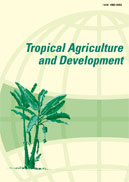65 巻, 3 号
選択された号の論文の6件中1~6を表示しています
- |<
- <
- 1
- >
- >|
Original Article
-
2021 年 65 巻 3 号 p. 125-131
発行日: 2021年
公開日: 2022/01/28
PDF形式でダウンロード (313K) -
2021 年 65 巻 3 号 p. 132-137
発行日: 2021年
公開日: 2022/01/28
PDF形式でダウンロード (312K) -
2021 年 65 巻 3 号 p. 138-145
発行日: 2021年
公開日: 2022/01/28
PDF形式でダウンロード (238K) -
2021 年 65 巻 3 号 p. 146-152
発行日: 2021年
公開日: 2022/01/28
PDF形式でダウンロード (493K) -
2021 年 65 巻 3 号 p. 153-162
発行日: 2021年
公開日: 2022/01/28
PDF形式でダウンロード (593K) -
2021 年 65 巻 3 号 p. 163-168
発行日: 2021年
公開日: 2022/01/28
PDF形式でダウンロード (379K)
- |<
- <
- 1
- >
- >|
